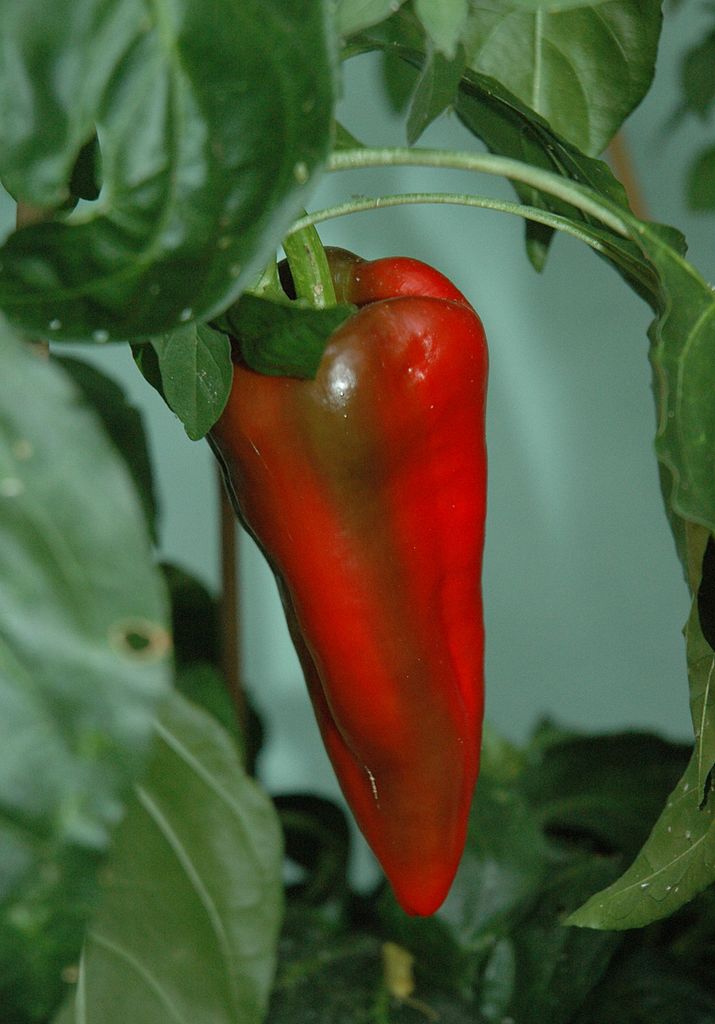Brought to the US in 1912 by the Joe Hussli family, Beaver Dam peppers are aptly named for their hometown in Wisconsin. They are heirloom Hungarian peppers cultivated for their large size, flavor, mild heat, early maturity, and high productivity.
What Are Beaver Dam Peppers?
Beaver Dam peppers are very rare Hungarian heirloom hot peppers introduced into the US in 1912 by Hungarian immigrant Joe Hussli.
Joe Hussli brought the Capsicum annuum peppers to his new Beaver Dam hometown of Wisconsin and grew them over the years, sharing them with the local community to popularize their production and consumption.
The community embraced the peppers, and they turned from what would have been a simple family heirloom pepper variety to a community heirloom cultivar.
Despite Beaver Dam hot peppers’ success, new hybrid varieties led to a decline in their production and popularity. They have been listed on Slow Food’s Ark of Taste as an endangered species on the brink of extinction.
However, this listing and other efforts, such as the annual Beaver Dam Pepper Festival, have increased the peppers’ popularity beyond their hometown. More people now grow them, and their future is finally looking up.
Began by Diana Ogle, the annual Beaver Dam Peppers Festival takes place on the second Saturday of September every year to celebrate the pepper’s heritage and promote its popularity.
Color
Beaver Dam peppers ripen from showy lime-green when young to deep red at full maturity. They may also ripen from bright green to shades of blood red or orange, usually defined as red-orange.
Texture
The skin of Beaver dam peppers is taut and smooth, flowing over thick, crunchy, aqueous flesh.
Flavor
If you love peppers with a slightly sweet but tangy flavor with slow-developing heat, you’ll love Beaver Dam peppers.
The peppers have a heat and taste profile similar to sweet paprika. However, because of their large size and thick skin, which make them hard to dry, we wouldn’t advise using these peppers to make sweet paprika.
Size
Only a few peppers can get as big as the Beaver Dam pepper. It grows to six inches long on average, with most pods being 6-9 inches long. The pepper reaches up to three inches wide.
Shape
The horn-shaped Beaver Dam pepper is a broad-shouldered conical pod with a tapered profile that’s usually straight but may curve as the length increases. It has a blunt, pointy tip.
How Hot Is A Beaver Dam Pepper?
500-1,000 Scoville Heat Units on the Scoville Scale means the Beaver Dam pepper is a mild-heat pepper. Its heat builds slowly and balances well with the pepper’s slightly sweet, tangy flavor.
The pepper’s slight sweetness is less sweet than gypsy and Carmen peppers, while its heat equals that of piquillo and mad hatter peppers, which also score 500-1,000 SHUs.
Compared to the 2,500-8,000 SHUs of the red jalapeno, the Beaver Dam pepper is much milder.
How To Use Beaver Dam Peppers In Cooking
Beaver Dam peppers are highly versatile. Both green and red versions are edible. You can put them to good use in the following ways:
- To make Beaver Dam hot sauce.
- Chop them into pasta, the famous Hungarian goulash, sandwiches, and salads.
- Cook by grilling, baking, roasting, or stir-frying.
- Cook into red pepper jellies where you’d use red bell peppers.
- Make stuffed peppers with rice, ground meat, or cheese.
- Cook into stews and soups for their flavor.
- Pickle pepper rings to use as a garnish.
- Make chile Rellenos and pepper sausages.
- Blend into marinades, salsa, Sriracha, kimchi, and hot sauces.
Where Do You Find Beaver Dam Peppers?
Since they are very rare community heirloom peppers, Beaver Dam peppers are hard to find, even if their popularity has been growing.
You can sometimes find fresh Beaver Dam peppers in local stores in Chicago, Illinois, and Milwaukee, Wisconsin. You can also buy them at the yearly Beaver Dam Pepper Festival.
Local growers also sell the peppers at farmers’ markets.
Beaver Dam pepper hot sauce is available online via Amazon and other internet-based chili product retailers.
How Do You Grow Beaver Dam Peppers?
Unlike most other peppers, Beaver Dam peppers are challenging to grow. The pods’ large size and the pepper plants’ prolificacy mean they require more care to grow since you have to support them with cages and trellises.
It takes 80 days for Beaver Dam peppers to reach the harvesting stage since transplanting. You’ll love them for their early maturity!
Buy Beaver Dam pepper seeds on the Internet via Amazon and online seed catalogs. You’ll need to pre-culture the pepper seeds indoors eight weeks before the last frost.
Germination will happen in 7-14 days. Plant your seedlings outdoors in large containers or garden in full sun with a plant spacing of 18-24 inches.
The open-pollinated Beaver Dam pepper is moisture-sensitive and yields more in a dry environment.
You can start harvesting your peppers when green, red, or red-orange at full ripening.
Substitutes For Beaver Dam Peppers
If you don’t hit the jackpot finding Beaver Dam peppers, you can replace them in meals with sweet peppers and other mild-heat hot peppers. Consider the options below:
- Gypsy, Carmen, purple beauty, California Wonder, and white bell peppers, which have zero heat.
- Banana peppers (0-500 SHUs).
- Mexibell peppers (100-1,000 SHUs).
- Aji dulce (0-1,000 SHUs).
- Mad hatter and piquillo peppers (both 500-1,000 SHUs).
- Chilly chili and Medusa pepper (both 1-1,000 SHUs).
- Pimento peppers (500-1,000 SHUs).

